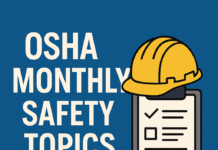
OSHA Fall Protection: Safeguarding Workers at Heights
In the realm of workplace safety, ensuring adequate fall protection is paramount. The Occupational Safety and Health Administration (OSHA) has stringent guidelines concerning fall protection, especially regarding height-related risks. Understanding and implementing these measures are crucial for maintaining a safe work environment.
Introduction to OSHA Fall Protection
The significance of fall protection cannot be overstated. OSHA mandates specific regulations to prevent falls in various industries. Understanding these regulations is fundamental to safeguarding workers’ well-being.
Understanding Fall Protection Heights
Fall protection height refers to the distance at which a worker faces the risk of a fall. OSHA delineates specific guidelines concerning these heights to ensure proper safety measures are in place.
Types of Fall Protection Systems
Various fall protection systems, such as guardrails, safety nets, personal fall arrest systems, and positioning devices, cater to different workplace scenarios. Each system aims to mitigate fall risks effectively.
Factors Influencing Fall Protection Height
The nature of work, equipment used, and environmental conditions significantly impact the determination of fall protection heights. Understanding these factors is pivotal in implementing appropriate safety measures.
OSHA Requirements for Fall Protection
OSHA provides industry-specific guidelines and mandates training requirements to ensure compliance with fall protection standards, prioritizing worker safety.
Implementing Effective Fall Protection Measures
Assessing workplace risks, selecting suitable protection systems, and conducting regular inspections are key to effectively implementing fall protection measures.
Costs and Benefits of Compliance
While adhering to OSHA regulations incurs costs, the long-term benefits for both businesses and workers in terms of safety and reduced accidents outweigh these expenses.
Innovations in Fall Protection Technology
Advancements in safety equipment and technology play a vital role in enhancing workplace safety and reducing fall-related incidents.
Case Studies and Examples
Real-life instances showcasing successful implementation of fall protection measures underscore their effectiveness in ensuring worker safety.
Common Misconceptions about Fall Protection Heights
Addressing misconceptions and myths surrounding fall protection regulations is crucial to clarify doubts and ensure accurate compliance.
Challenges in Ensuring Compliance
Industry-specific challenges often pose hurdles in meeting OSHA standards. Identifying and overcoming these challenges is essential for effective implementation.
Future Trends in Fall Protection
Anticipating advancements and changes in fall protection technology and regulations helps in preparing for the future of workplace safety.
Employee Perspectives on Fall Protection
Understanding workers’ experiences and perceptions regarding fall protection measures is vital for fostering a culture of safety in the workplace.
Resources for Further Information
OSHA provides comprehensive resources for understanding and implementing fall protection measures. Additionally, further reading materials and resources aid in enhancing workplace safety.
Conclusion
OSHA’s regulations on fall protection heights are critical in mitigating workplace accidents. Adhering to these guidelines not only ensures compliance but also prioritizes the safety and well-being of workers.
Occupational Health and Safety Administration (OSHA)
OSHA 500 Trainer Course: Fees, Eligibility, Duration, Syllabus, Exam, How To Apply
OSHA 30 Hour Construction Training Course: Fees, Eligibility, Duration, Syllabus, Exam, How To Apply
Unique FAQs:
- Q: Are fall protection regulations the same across all industries? A: No, OSHA tailors fall protection guidelines to suit different industries’ specific needs.
- Q: What are some cost-effective fall protection measures? A: Utilizing guardrail systems and conducting regular safety training sessions prove to be cost-effective measures.
- Q: How often should fall protection equipment be inspected? A: Regular inspections, typically before each use and periodically as per manufacturer recommendations, are essential.
- Q: Are there penalties for non-compliance with OSHA fall protection regulations? A: Yes, non-compliance can lead to severe penalties, including fines and work stoppages.
- Q: How do innovations in fall protection technology impact workplace safety? A: Technological advancements contribute significantly to improving worker safety by offering more efficient and reliable fall protection systems.





















